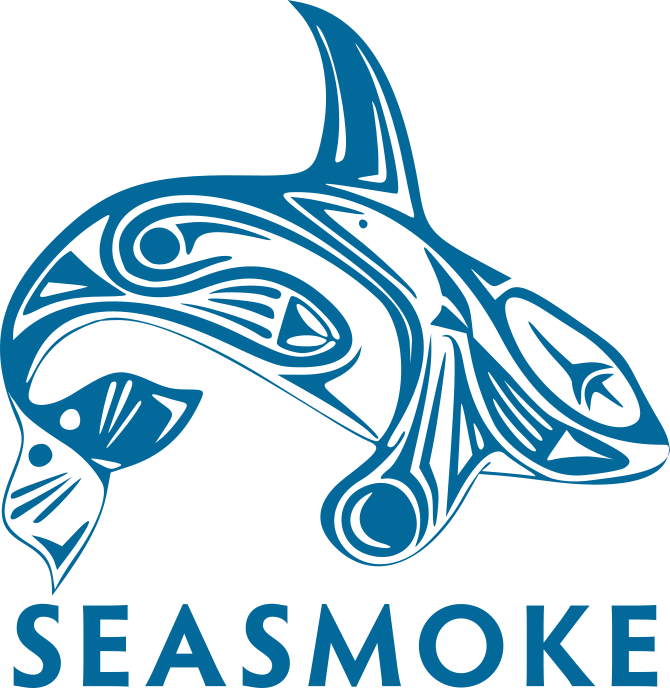Wonderfully diverse viewing of cetaceans and numerous other species!
And so began another day with our morning tour and sighting of a Humpback whale blow in Weynton Passage as well as some fabulous viewing of a large number of Stellar Sea Lions that were hauled out and lounging on smooth boulders at the waters edge. Nearby, we watched two young Eaglets exercising their wings from the lofty height of their nest while their parents looked on. That sighting was amazing, especially for those who had not seen young eaglets before and was a timely hint at what might follow next. Our senses were peaked with anticipation and our eyes keenly alert and watching out for blows of more Humpback whales in the distance.
And so it was that we were sitting quietly in our seats watching five or more Humpback whales foraging nearby us in wide circles at the top end of Blackfish Sound. They were targeting the dense formation of bait balls at the water's surface and we scanned the area, watching the gulls gather together, time and again in a feeding frenzy. Their squabbling cries were a sure sign that a Humpback whale might surface and lunge through the middle of the bait ball with tremendous speed but at one point we were fortunate to observe one Humpback whale trap feeding.
Trap feeding is a technique that some whales use to trap the fish that are swimming in small schools. The Humpback whales lie with their mouths wide open at the surface of the water where juvenile fish collect to escape predation by diving birds (common murres and rhinoceros). The humpbacks will often spin around and, or use their large pectoral flippers to push the fish into their mouths and then close them, trapping the fish inside. This form of feeding enables the whales to conserve energy by using far less than when they lunge feed on bigger, more dense concentrations of juvenile herring. It was a marvellous opportunity for our passengers on board the boat this morning to witness and photograph this remarkable feeding behaviour.
At Cracroft Point/ Blakney Passage we encountered several pods of orcas that had come to feed in the swirling and choppy waters of the flooding current. It was an exceptional place from which to observe the coming together of numerous species (cetaceans and birds) all of them focused and feeding on their choice of prey. To watch the large Humpback whales foraging in the mix of Orcas, Pacific White-sided dolphins, Dall’s porpoises, Gull species, Rhinoceros Auklets and Common Murres was absolutely phenomenal! We also had the opportunity to listen to the orcas beautiful vocalizations via our hydrophone. As we headed back, a small group of Dall’s porpoises came alongside and rode briefly at our bow, it was a delightful surprise, especially so for the children on board.
The afternoon tour was equally as diverse and as incredible as the morning tour. There was exceptional viewing of orcas, the same groups we had seen in the morning (A50/ A54's, A25's, A42's, I4's) and this time they were observed traveling and foraging in Blackfish Sound and passing through the middle of the Humpback whales who were feeding near Bold Head. We listened to the orcas vocalize and thoroughly enjoyed being in the presence of the orcas and dolphins (who were harassing the orcas) and Humpbacks all at the same time, and we did not know in which direction to look! The Humpback whales did not disappoint and we watched in awe as they breached, again and again while others continued lunge feeding!
Other species also seen and not to be forgotten: Harbour Seals, Red-necked Phalaropes and Pigeon Guillemots. The weather today was gorgeous, the sunlight making all colours bright and beautiful. The sky and sea were as blue as can be and the trees were a mix of yellow, green and browns.
Our photo’s taken over the last two days will be posted tomorrow.




